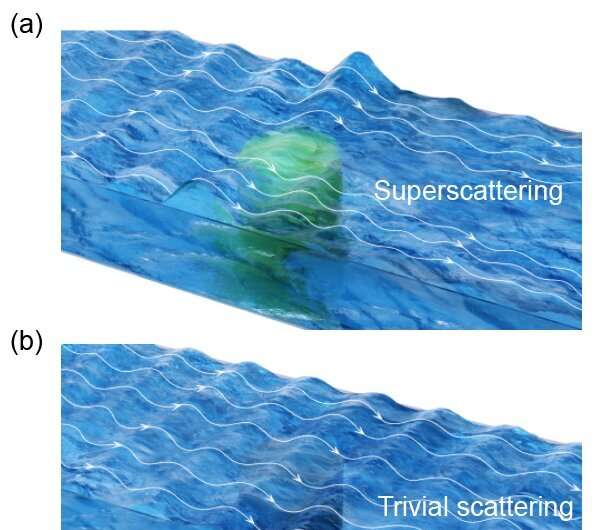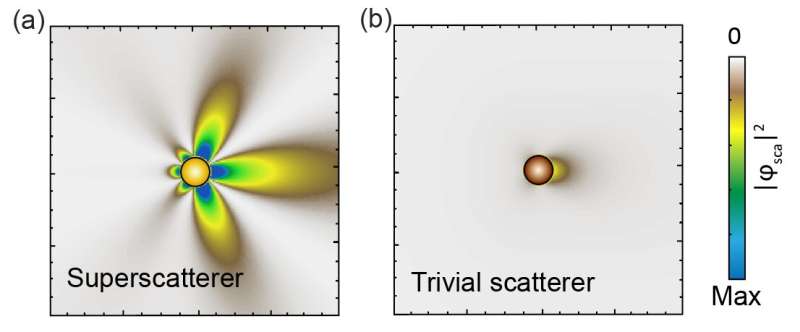Superscattering of water waves: Breaking the single channel scattering limit

The National Science Review recently published a study by Huaping Wang’s group at Zhejiang University. Inspired by electromagnetic metamaterials, the research team designed and fabricated a water wave superscattering device based on degeneracy resonance by using the similarity of water wave equation and electromagnetic wave equation under shallow water conditions, which was realized experimentally.
Water waves are a very intuitive fluctuating phenomenon that is widely observed in the natural world. Understanding and controlling the propagation of water waves is significant for both hydrodynamics and marine engineering. In recent years, metamaterials have developed rapidly and become a beneficial tool to manipulate electromagnetic waves, elastic waves, acoustic waves and water waves. Enhanced water wave scattering using metamaterials has a wide range of promising applications in marine energy harvesting and coastal protection.
Inspired by the superscattering in electromagnetic and acoustic waves, it is possible to design water wave superscatterers based on transformation optics to achieve an increase in the scattering intensity of a given object. However, its experimental implementation remains a great challenge due to the extreme requirements on anisotropic parameters and in water wave conditions.
Based on the degenerate resonant superscattering mechanism, the researchers theoretically designed and experimentally verified the superscatterer structure of water waves in an experimental water tank. The subwavelength superscatterer is composed of multiple concentric cylinders with different heights, and the geometry and operating frequency of the superscatterer are optimized by a simulated annealing algorithm.

By designing resonances with different angular momentum channels, the total scattering cross section can break the limit of single-channel scattering by several times and also far exceed the scattering intensity of ordinary scatterers of the same size. For an ordinary scatterer, the resonances are spread out and the total scattering cross section is limited by the single channel.
In the experiments, the research group measured the near-field patterns of the water-wave superscatterers, which were in agreement with the theoretical predictions and numerical simulations, and further measured the superscattering effects under different boundary conditions, water depths, and frequencies.
This study provides a simple and low-cost method to enhance the scattering of water waves, which can be used to enhance the scattering of small sub-wavelength objects, and this is highly relevant for marine engineering, offshore coastal protection, etc., and may be used in marine energy harvesting devices and coastal protection facilities in the future.
More information:
Zijian Qin et al, Superscattering of water waves, National Science Review (2022). DOI: 10.1093/nsr/nwac255
Citation:
Superscattering of water waves: Breaking the single channel scattering limit (2022, December 22)
retrieved 23 December 2022
from https://phys.org/news/2022-12-superscattering-channel-limit.html
This document is subject to copyright. Apart from any fair dealing for the purpose of private study or research, no
part may be reproduced without the written permission. The content is provided for information purposes only.
For all the latest Science News Click Here
For the latest news and updates, follow us on Google News.

